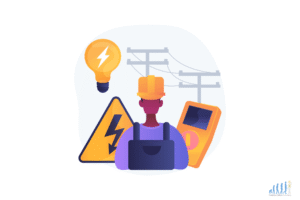Collaboration is the backbone of successful AV design. Every audio visual project involves multiple stakeholders—system designers, engineers, project managers, AV integrators, and clients—working together to bring a shared vision to life. Yet, traditional methods of collaboration in AV design have long relied on scattered files, disconnected tools, and time-consuming back-and-forth communication.
Artificial Intelligence is rapidly changing that landscape. By integrating AI into the design process, platforms like XTEN-AV are transforming how teams collaborate. They enable real-time coordination, automate tedious tasks, reduce human error, and allow experts to focus on creative problem-solving instead of chasing down specs or updating drawings manually.
In this blog, we will explore how AI enhances collaboration in AV design projects and how tools like XTEN-AV empower teams to work smarter, faster, and more efficiently.
The Challenge of Collaboration in AV Projects
AV design is a complex process that requires input from different disciplines. Architects provide room dimensions and layout details. Engineers handle technical requirements. Project managers coordinate timelines and budgets. AV integrators must ensure that the system functions perfectly when installed.
However, the collaboration process often gets bottlenecked due to:
-
Disconnected workflows and tools
-
Miscommunication or missing data
-
Manual updates and version control issues
-
Lack of real-time visibility
-
Delayed responses between stakeholders
These challenges not only slow down the design process but also increase the chances of mistakes and rework. AI helps solve these problems by acting as a smart connector, communicator, and coordinator.
1. Centralized Design with AI-Powered Automation
XTEN-AV provides a cloud-based environment where all stakeholders can view, edit, and comment on the same AV project in real time. But it is not just a digital whiteboard. The platform uses AI to manage the technical side of collaboration.
For example, when a designer adds a device to the schematic, XTEN-AV can automatically suggest compatible components, validate connections, and update system layouts across associated drawings. This reduces manual effort and ensures consistency across files.
AI streamlines the design process by eliminating redundant steps and keeping every contributor on the same page.
2. Smarter Task Delegation and Notifications
In traditional AV projects, assigning tasks and tracking progress can involve long email chains and manual follow-ups. AI simplifies this process by enabling intelligent task automation.
XTEN-AV can:
-
Notify engineers when a design update requires recalculating signal loads
-
Alert project managers if a component is out of stock or discontinued
-
Suggest task priorities based on project deadlines
-
Track who made what changes and when
This level of AI-driven coordination improves communication and helps everyone stay accountable without micromanagement.
3. Real-Time Data Sync and Version Control
One of the most frustrating parts of AV collaboration is managing version control. It is easy for multiple people to work on different versions of the same file, which can cause conflicts and delays.
AI in XTEN-AV ensures that every change made to the project is automatically saved and synced in real time. Users always access the most recent version of the file, and the system maintains a full edit history so that nothing is lost.
AI algorithms also monitor conflicting changes and can prompt the team to resolve discrepancies before they become problems.
4. Instant Design Validation for Technical Teams
When engineers or integrators receive a design, they must check for errors, validate configurations, and ensure the system is technically sound. With AI, this validation becomes automated.
XTEN-AV uses rule-based intelligence to check the design for:
-
Incompatible device pairings
-
Exceeded signal distances
-
Missing accessories or connectors
-
Mismatched power requirements
Instead of having engineers spend hours combing through schematics, AI instantly flags issues and even recommends fixes. This accelerates the technical approval process and reduces the risk of costly on-site failures.
5. Client Involvement Without Technical Overload
Clients are an important part of AV projects, but they often struggle to understand the technical side of system design. AI helps bridge that gap by simplifying how project details are communicated.
With XTEN-AV, AI can:
-
Generate easy-to-read presentations of the AV system
-
Provide visual layouts instead of raw schematics
-
Translate design choices into benefits and use cases
-
Respond to client changes by updating the design in real time
This transparency builds trust and reduces the time spent on back-and-forth clarifications.
6. Faster Proposal Turnaround for Sales Teams
Collaboration does not stop at design. Sales teams also benefit from AI in XTEN-AV. The platform can auto-generate proposals based on the design, complete with pricing, brand information, and bill of materials.
This means sales representatives can work alongside engineers and designers without waiting days for updated quotes or documents. AI ensures that proposals are always aligned with the latest design, helping close deals faster and more accurately.
7. Design Learning and Continuous Improvement
One of the most powerful advantages of AI in collaboration is its ability to learn from past projects. XTEN-AV collects anonymized data on what works, what fails, and what leads to project delays. Over time, the platform learns and provides better recommendations for design layout, component selection, and workflow optimization.
As teams collaborate, the AI engine learns from their patterns and suggests smarter ways to work together on future projects.
8. Cloud-Based Access for Remote Teams
Modern AV projects are often handled by teams spread across multiple locations. AI-powered platforms like XTEN-AV enable full collaboration in the cloud, meaning that team members can work from anywhere without losing momentum.
With 24/7 access and AI-powered updates, remote collaboration is no longer a limitation but a strategic advantage.
Conclusion
AI is not here to replace AV designers, engineers, or integrators. It is here to amplify their strengths and remove friction from the collaboration process. By automating repetitive tasks, flagging errors early, and enabling real-time coordination, AI helps AV teams deliver higher quality work in less time.
XTEN-AV stands at the forefront of this shift, providing an AI-powered platform that connects people, systems, and data like never before. From design to documentation, from sales to service, collaboration is faster, easier, and more intelligent with AI in the mix.
If you want to improve your project efficiency, reduce delays, and enhance communication across your AV team, now is the time to embrace AI-powered collaboration with XTEN-AV.
Read more: https://picktu.in.net/article/streamlining-av-troubleshooting-with-ai-diagnostics



